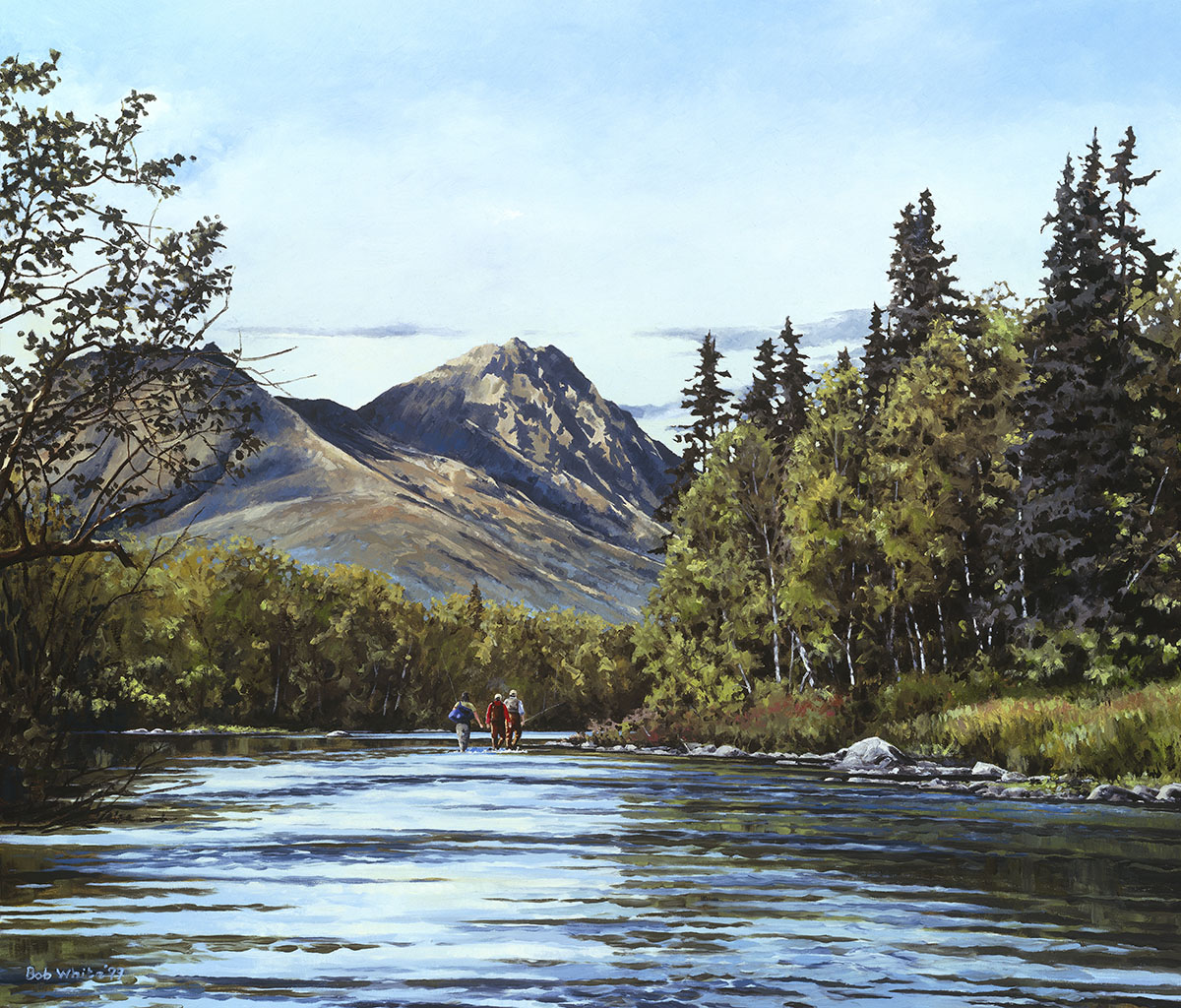
The most beautiful thing we can experience is the mysterious. It is the source of all true art and science.
Albert Einstein
It’s a short river, only seven miles long. It begins in a high, windswept lake that is isolated by a barrier falls. I’m told the lake is nearly barren of fish, with only a few wizened char whose ill-fated ancestors were trapped there, and left to feed upon their own young and aged.
Downstream from the outlet of the lake the river meanders through a low and wet meadow, slowly gaining speed and depth until it tumbles through a series of craggy ledges. It plunges finally, over a cliff of such height that the pool at its base becomes the furthest limit of migration for any of the millions of salmon that return to the watershed. It’s both the end of the line, and the source of a mysterious journey; this is the headwater.
Above the falls, the river is a beautiful and barren sadness, like someone, who in spite of their splendor and charm is hollow and incapable of love. The river I cherish is born below, where it courses through a long and narrow canyon until the landscape softens and it begins to meander. Here it wanders, seeking to discover its way as Alaskan rivers often do, in flowing ribbons that twist and braid back upon themselves in watery labyrinths of life. Trees, even forests are but a springtime diversion for a wild river seeking its direction. Even shale walls and granite redoubts, though they may take longer to subdue, are no match. Water, the most yielding of substances always finds its way.
As the river nears the lake, it seeks the comfort of a mountainside and responds to the embrace by slowly drawing in upon itself until only two channels remain. These finally converge, and then turn briefly away once again, as first-time lovers might hesitate before surrender.
The final union is in a long and deep pool, punctuated by a smooth granite boulder where the two currents join. Now, free from indecision, the headwater runs straight and true for its last mile, where it loses itself in a blend of water that is called Seventh Lake by the ancient people. There, in the depths of the lake, the complex mix reforms to become the second river in a long chain that eventually stretches to the sea.
I was introduced to this headwater stream as a young guide, and I experienced an immediate and intimate connection. I felt wondrously insignificant as I waded upstream that first morning, the shallow riffles full of sockeye salmon, their crimson backs often out of the water as they spawned. Thirty years later, I feel the same. To fish this river and witness such energy and animation seems an invitation to join in an ancient and primal dance.
I’ve guided fishermen on this headwater stream for three decades, and have come to think of it as my own; a place I share with friends, where I go to clear my head. Many important decisions in my life have been made while grounded there, standing in its currents. This place has become an important part of who I am. Perhaps that’s why I’ve painted it so often.
It’s a short river, in comparison to most, but its influence upon my life has been long and limitless. When I finally cross over to the other side of things, Lisa knows to take what’s left, and walk up the headwater stream until she comes to the deep long pool where the currents converge. I’ll merge with the headwater stream there, where it makes its final decision and travels to the sea.
Postscript:
I was introduced to the Grant River in the spring of 1984, my first season in Alaska. In the last three decades I’ve spent a considerable amount of time there, and I’m intimate with its many moods. I’ve heard it said that every trout stream is beautiful… some are just more beautiful than others. This is one of my favorites.
In the early spring, when the rainbows are feeding heavily, it’s a wonderful place to fish dry flies and nymphs, and it’s deep holes regularly yield good fish to a well placed sculpin.
Later in the summer, it becomes a giant spawning redd for salmon. While sockeyes predominate, there are also small residual runs of king, chum, pink, and even silver salmon, and I smile at nature’s version of an insurance policy whenever I come upon them. With the salmon come arctic char from the lake below, and sometimes a small run of miniature, sea run Dolly Varden.
Upstream, near the barrier falls, beyond the reach of most guides and their clients, there are clear, turquoise pools that always hold rainbow and arctic grayling. It’s a dream of mine to one day hike in and spend a week walking it’s entire length, fishing early and late, when the resident fish have probably never seen a fly.
My last trip down the Grant was with my good friend Bill, with whom I’ve traveled and fished the world. Although it was much too late in the season for the Grant to fish well, Bill sensed my need to return and we did it just for old time’s sake.
It was a slow day. As I recall, Bill took a couple of nice fish, and I remained fishless late into the afternoon, due primarily to my decision to stick with a mouse pattern that had been so successful for us in Kamchatka. Practically within sight of Kulik Lake (and the end of our day) the Grant presented me with one last gift to cherish and remember… a 22″ rainbow on my mouse.
“End of the Day”, the image, which accompanies this essay, was painted to illustrate one of John Gierach’s closing columns in Fly Rod & Reel magazine. Although the original has been sold, we have released the image as a limited edition print. It can be found on our web site.





